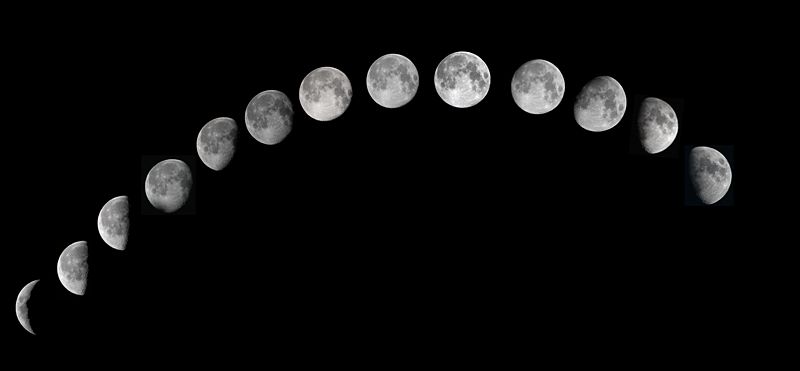When we think we can’t see the moon, it can definitely see us. This doesn’t just hold true when we’re sleeping. As the children’s book, “Goodnight Moon,” goes, we may say “Goodnight” to the moon – but it’s still there outside our window and outside our atmosphere. Different parts of the moon disappear at different points during the month, and we can observe this even as children.
In elementary school, though, our teachers enlighten us on the process that causes these weird shapes. Sometimes they give us proper explanations. Other times, they don’t. In my personal experience, my teacher didn’t quite get it right. She used a nice display of the Sun, the moon, and the earth. The Sun was actually a round ball that contained a light bulb, with a little hole in the side to allow “sunlight” to escape. The overhead lights went off, and she lit up the earth and moon with our little “Sun”; however, she positioned the earth directly between the Sun and the moon -meticulously casting Earth’s shadow on the moon figure in shapes imitating waxing crescents and quarter moons.
Every night, my seven-year-old self would look at the moon from my bed. I looked at it like I felt bad for it, as if to say, “Goodnight, Moon. Sorry for covering you up.”

But this isn’t how the moons phases work at all. In fact, the earth is positioned so far away from the moon (a distance of thirty Earth diameters) that it rarely gets the chance to cast a shadow on the moon’s surface. When we see phases, we are actually just seeing the moon illuminated from a different perspective or angle. This is because the moon revolves around Earth, yet it always has a side facing the Sun (an illuminated side).
So, as the moon spins and revolves around Earth, we see it from different angles. Sometimes we get to see more of its (currently) illuminated half. Other times, we see less or none.
Honestly, the moon is just doing its thing.
Unless the earth is exactly positioned between the Sun and the moon, which may only happen every six months, we never cast a shadow on it.
I don’t feel bad anymore – we don’t steal the moon’s spotlight. Even in the rare event that we do (during a lunar eclipse), everyone’s more excited about staying up late to see the moon anyway. Now, going to bed as an enlightened college student, I might say something like, “Goodnight, Moon. Looking especially waxing tonight.”
